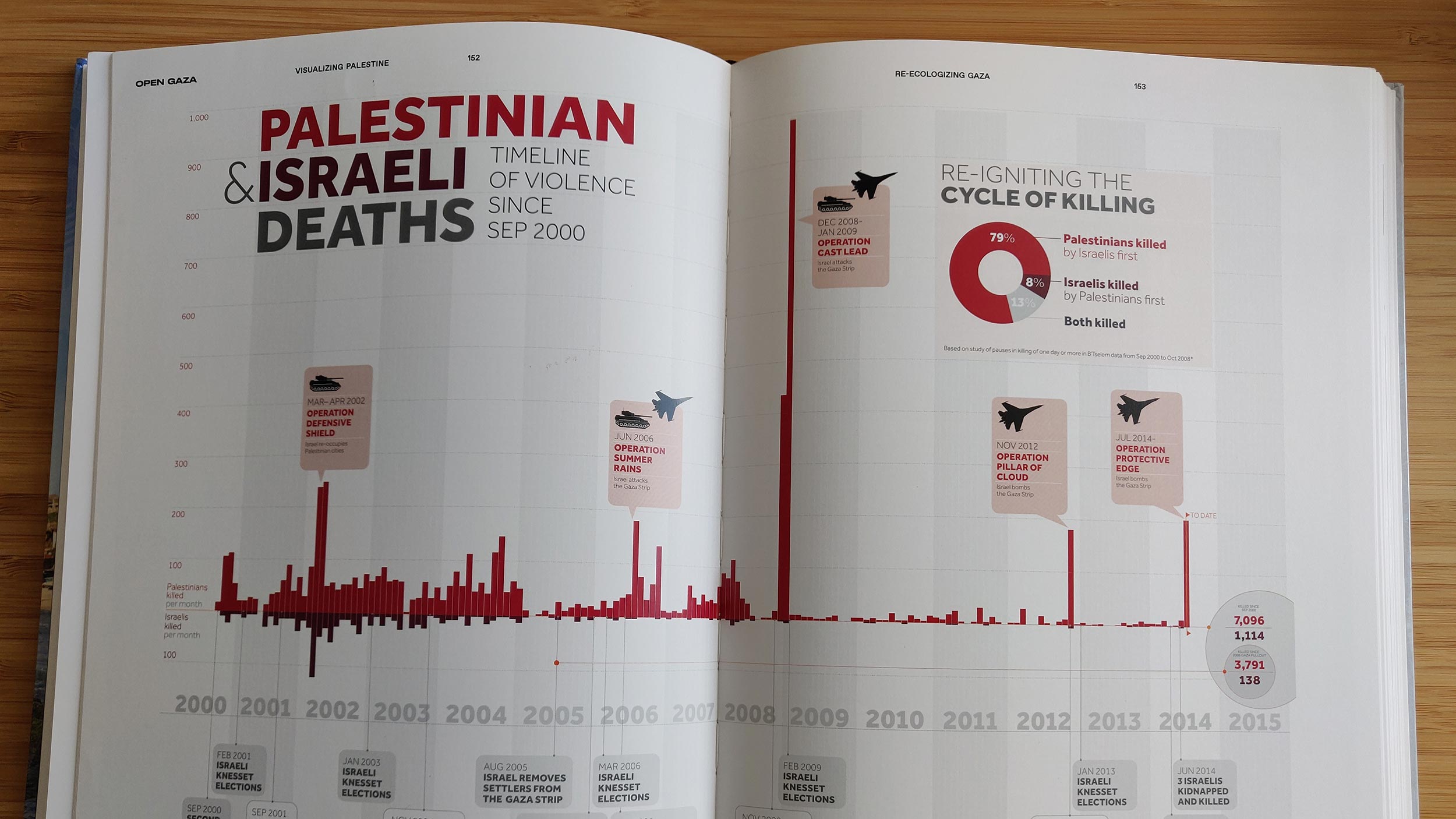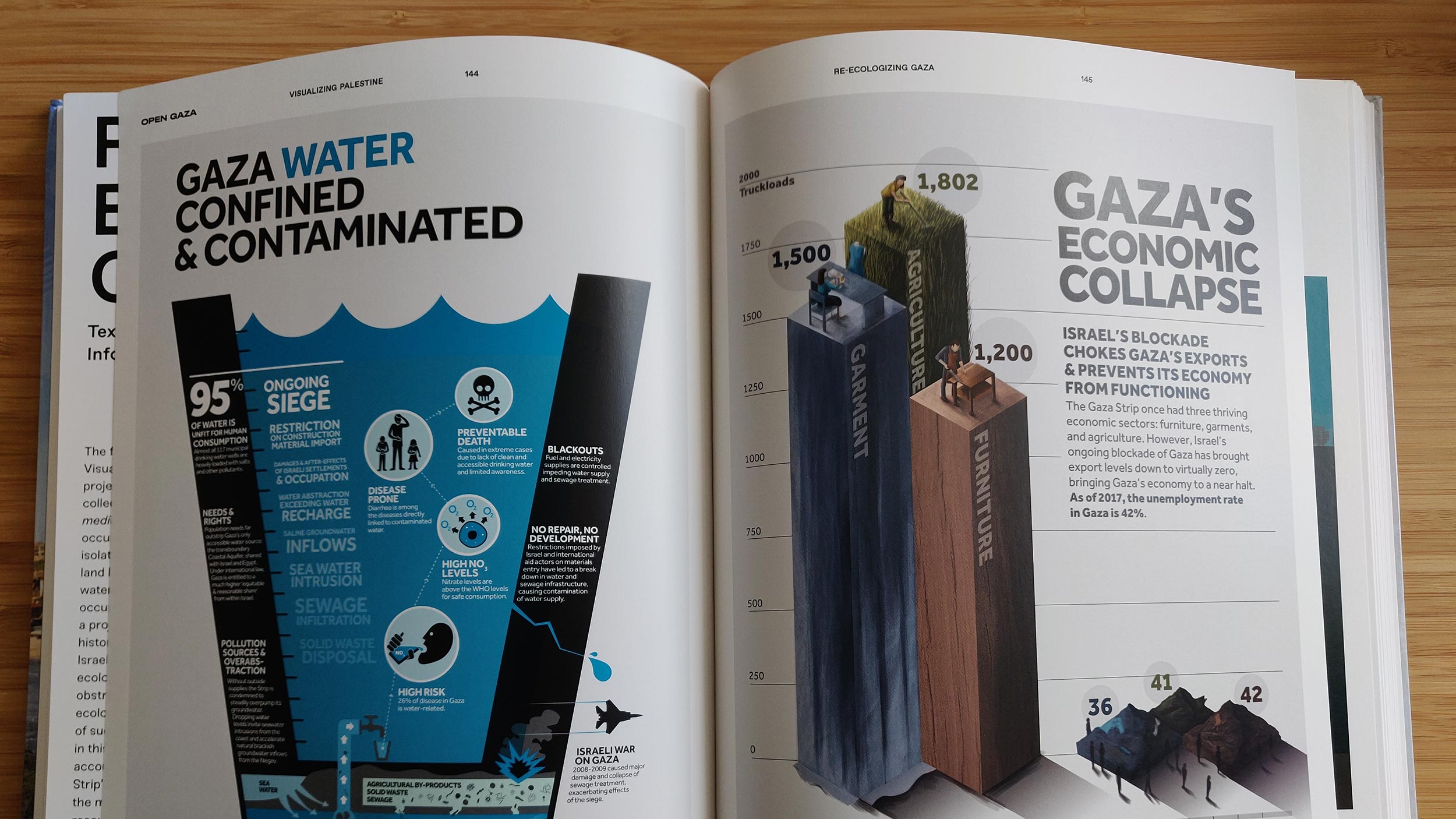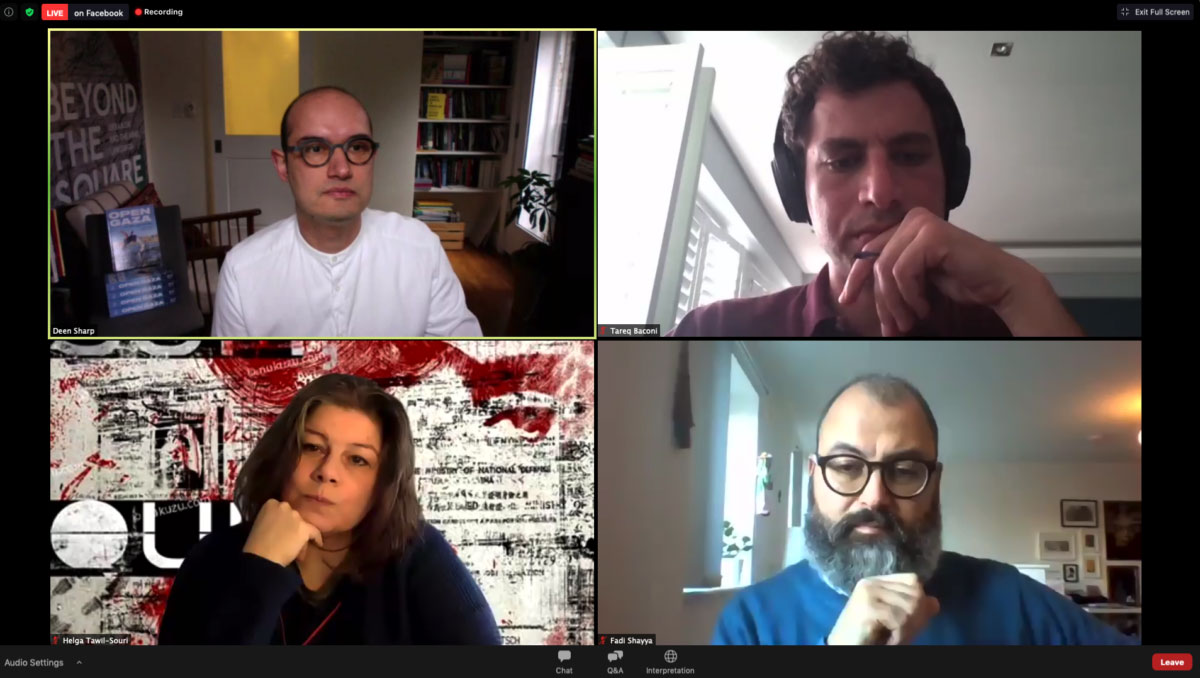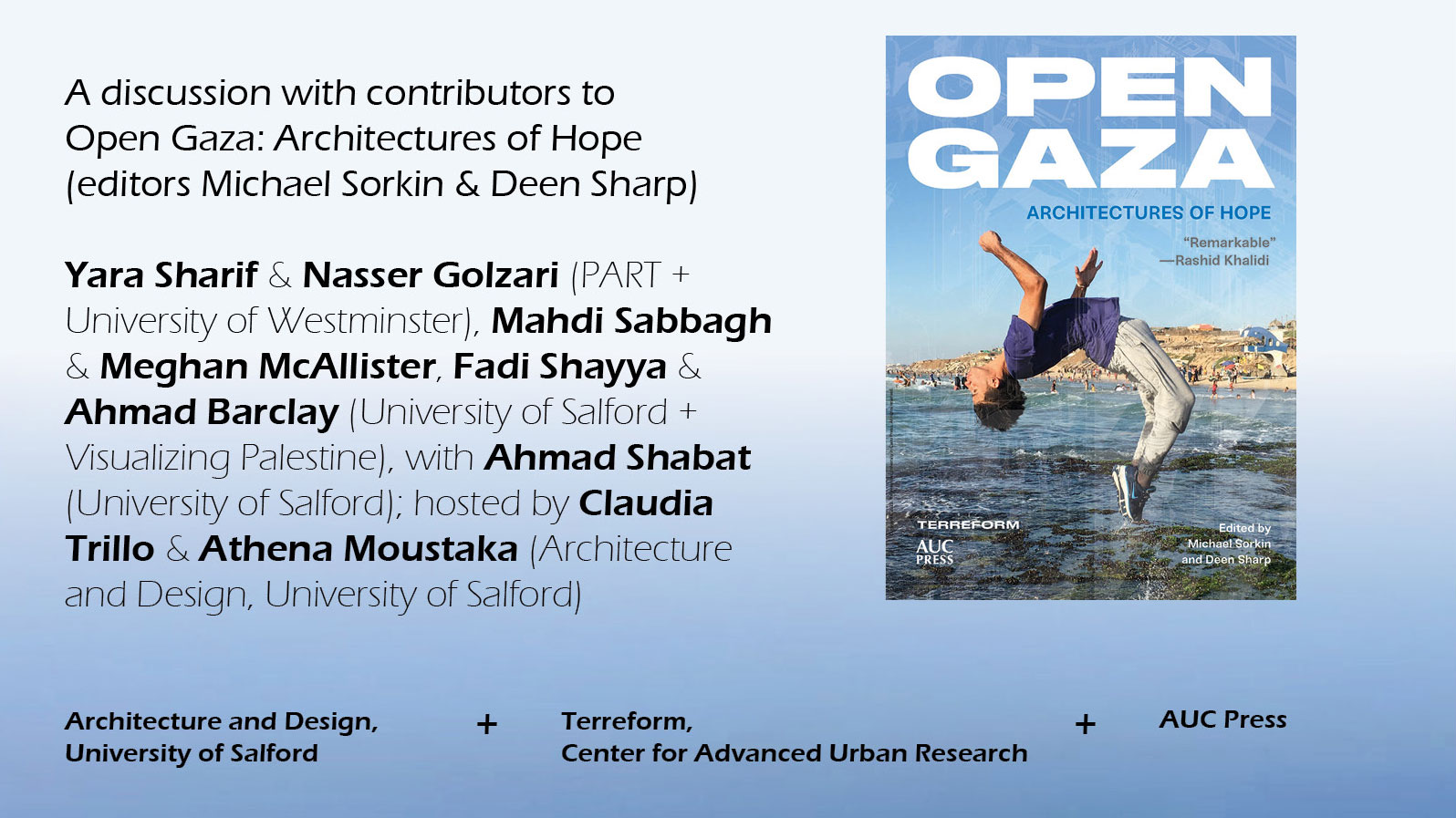
We respect your privacy. We use non-sensitive information such as cookies and device identifiers to insure that we give you the best experience on our website. You can agree to allow cookies or opt out.


 The following graphic works by Visualizing Palestine (VP), the first project of the Visualizing Impact collective, serve as method and medium to reconnect what the Israeli occupation persistently separates and isolates through controlling Gaza’s land borders, airspace, and territorial waters.
The following graphic works by Visualizing Palestine (VP), the first project of the Visualizing Impact collective, serve as method and medium to reconnect what the Israeli occupation persistently separates and isolates through controlling Gaza’s land borders, airspace, and territorial waters.





In the chapter “Re-ecologizing Gaza,” I curated and introduced a selection of infographic projects from the fantastic visual work of Visualizing Palestine*. My argument stated, “Against the occupation’s ‘de-ecologizing’ project, VP’s work contributes to a method of ‘re-ecologizing’ the Gaza Strip. That is to re-connect and re-establish ecological flows relevant to humans and centered around their environment.”
>>> Get the book Amazon
In the book Launch of Open Gaza: Architectures of Hope at the LSE Middle East Centre (Feb 2022), I joined Dr Deen Sharp, Prof Helga Tawil-Souri, and Dr Tareq Baconi as a speaker to discuss how the book draws inspiration from everyday struggle and survival of Gazans to offer new possibilities for urban and architectural pedagogies about people living with conflict.
>>> Watch on Facebook
>>> Watch on YouTube
In the research talk Narrating Space in Gaza with/beyond the Conflict at the University of Salford (March 2022), I managed the scientific organization of the event and coordinated the organization with the hosts Dr Claudia Trillo and Dr Athena Moustaka at the University of Salford. The talk featured contributions by Dr Yara Sharif & Dr Nasser Golzari, Mahdi Sabbagh & Meghan McAllister, and Ahmad Barclay.
>>> Download Poster
>>> Download Booklet
*Visualizing Palestine utilizes Creative Commons licensing, allowing for the free use and distribution of their resources. To reuse the original visuals – with the proper credits and sources and for further information on available language versions and community engagement, you can download the visuals from visualizingpalestine.org.
 These research-graphic works capture manifold moments of tension where Palestinians’ assassinated and calorie-controlled bodies become numbers momentarily, only to reemerge over and over again as consumable media images. Everyday practices of the occupation soldiers and settlers and the Strip’s natives and refugees complicate grand narratives of state, sovereignty, territory, and authority. The occupation recruits and/or extracts environmental commons as critical resources and infrastructures.
These research-graphic works capture manifold moments of tension where Palestinians’ assassinated and calorie-controlled bodies become numbers momentarily, only to reemerge over and over again as consumable media images. Everyday practices of the occupation soldiers and settlers and the Strip’s natives and refugees complicate grand narratives of state, sovereignty, territory, and authority. The occupation recruits and/or extracts environmental commons as critical resources and infrastructures.
